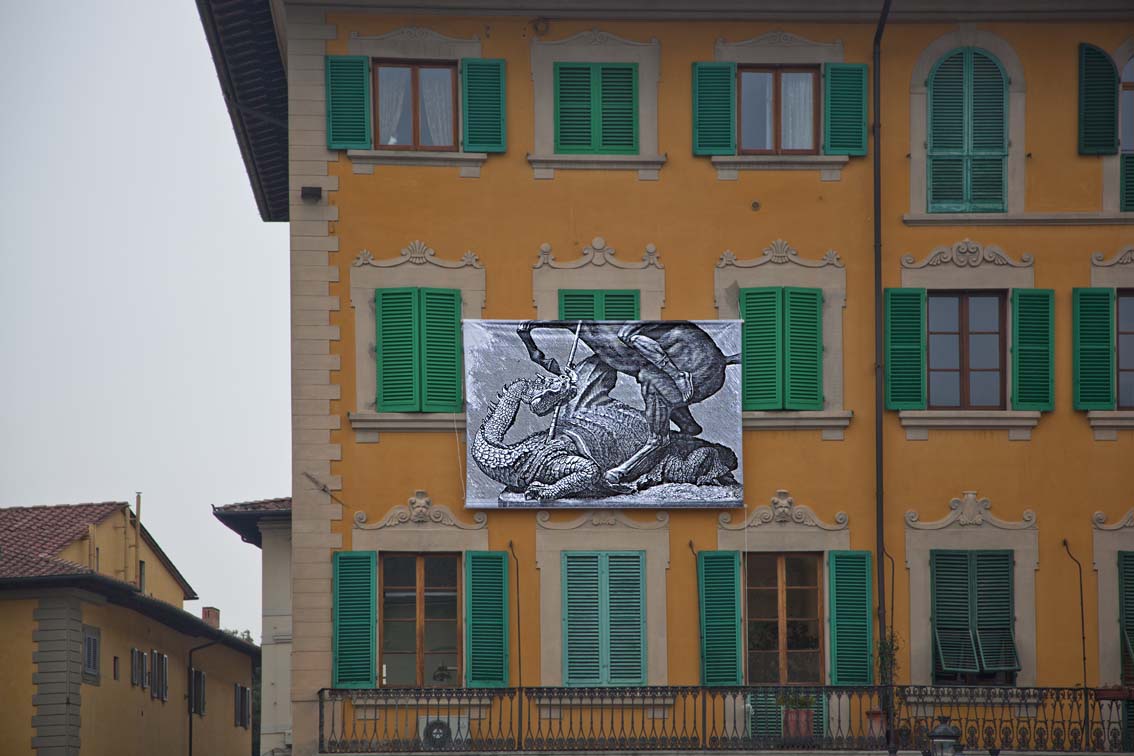Anno del Drago, curated by Vittoria Ciulini, Centro per l'arte contemporanea Luigi Pecci, Prato.
March 2012

Thursday the first of March, a little after five in the morning, while the city still slept, a dragon appeared in Piazza del Comune and in Piazza del Duomo in Prato, in a performance by the artist Robert Pettena. Pettena was one of the nine artists selected to work on the Chinese New year’s festivities, in Prato, with an event connected with the Dance of the Dragon procession organised by the Chinese Buddhist Association in Italy, with the collaboration of Dryphoto Contemporary Arts.
Pettena hung a huge banner of St George slaying the dragon on the front of the Palazzo Comunale, then later onto a house opposite the Duomo. He wanted to draw attention to the unhappy fact that the Prato authorities had not allowed the Chinese dragon procession to process through the town centre, forcing them to keep within the industrial area where they work, in the outskirts of the town.
The artist played with the different meanings the dragon image has in Western and Chinese cultures. The Chinese dragon is a marvelous, mystical figure. Nine parts of its body are formed by nine animals in one mythological image. It has shrimp eyes, deer horns, the mouth of a cow, a dog nose, dogfish moustaches, a lion’s mane, a serpent’s tail, fish scales and an eagle’s feet.
The Chinese dragon is associated with the imperial family and is an auspicious symbol, connected with water, bringer of rain and water in general. In China the ancestors prayed to the dragon during times of drought and they considered it their father. The Chinese people celebrate new year with a dragon procession because the dragon dance in the sky ensures that there will be prosperity during the coming year. In China there are Dragon King’s temples everywhere.
In the West on the other hand the dragon, often figured with a pointed horn and serpent’s body, with six legs, no wings if it’s a sea dragon, with wings if it’s an earth dragon, has scales all over its serpent body and the ability to breathe fire. This Western dragon is associated with famine, death, destruction and violence and is the symbol of ill health overcome by the weapon of healthcare. Saint George is the most famous dragon killer, soldier-Saint protector of England.
Pettena‘s banner had an image taken from an engraving by Joseph Edgar Boehm (1834/1890). In the year of the dragon, a Western interpretation of the dragon arrived in the historic centre of the city as a protest against the town of Prato forbidding the Chinese new year dragon procession in the historic centre. Once again the West sent the dragon away.
>>> See the press review <<<
